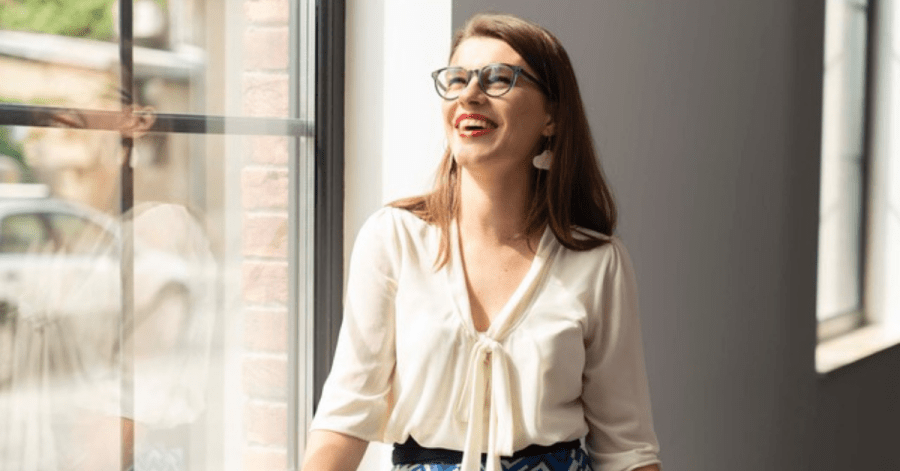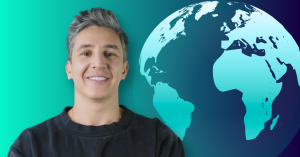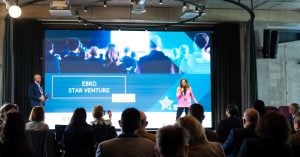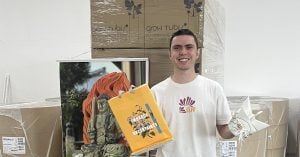As the wave of solidarity with Ukraine following the Russian invasion travels around the world, we are reminded of the importance of staying connected and united. Communities can provide the infrastructure necessary to foster connections and follow a common purpose. Building an online community is more relevant in today’s digitized, post-pandemic society, in order to enable long-distance communication and collaboration. For a brand, communities are an invaluable opportunity to connect with the customer and create engagement. To get you up to speed on the topic, we prepared 5 key strategies for building online communities.
Our key subject matter expert is Roxana Buzetelu, a Romanian community builder. Back in 2018, Roxana started a Facebook group dedicated to knowledge-sharing and peer-to-peer support around climate mitigation and the transition to a more sustainable lifestyle.
Today, the Micile Bucurii (Ed.note Little Joys in translation) community spans across two Facebook groups with more than 20K cumulated members, as well as an NGO with a growing portfolio of educational projects for citizens and organizations.
It’s important to note that in the last few days, the Loc de Troc – Micile Bucurii community paused its normal activities to direct resources to Ukrainian families instead.
In the article, you’ll learn 5 key strategies for building online communities, including:
• How to start a community;
• How communities can encourage change;
• How to keep a community engaged;
• How to communicate effectively in a community;
• How a community can transform into something bigger.
How to start an online community
When does a community start? When it manages to gather members around a common purpose. This goal needs to have a sense of urgency and underline common values. Without a meaningful topic, it is difficult to create real commitment. Strong communities are often future-oriented, where members are looking to collaborate on building a better future together, regardless of the niche. This joint mission will in turn become a bond of identity for the members.
For Roxana Buzetelu, building an online community started when she was on maternity leave. The time spent at home helped her realize the waste that the family was generating.
“After I did a lot of research on what a sustainable lifestyle implies, I realized that this topic was very niched and there was little to no information online. At the same time, considering my marketing background, I was learning about growth strategies. The idea of building communities around a topic seemed very appealing to me. So, in July 2018, I started Micile Bucurii,” Roxana tells us.
Micile Bucurii was received with enthusiasm in Romania. Today, the group counts over 6K members. But the wheel was already spinning and Roxana didn’t stop here.
“The second community, Loc de Troc, is a “pandemic baby”. Loc de Troc is based on the barter economy; people can exchange goods or services, with no need for money. This is one of the ways in which we can encourage a circular economy. Even though Loc de Troc has just a little bit over 1 year, it surpassed the first community. We are now 16,000 members, whilst in the first we were almost 7,000,” she shares.
How communities can encourage change
The secret sauce to a community is its power to bring about change, by uniting its members towards a common purpose and engaging them in a productive conversation. Roxana further explains in the context of Micile Bucurii:
“I feel the peer-to-peer discussions bring a lot of value in systemic change. For example, we all share best practices but also major fails from our journey towards a more sustainable life. It feels good to know that we are not sold solutions, we are there to inspire each other, to support each other and to recommend best practices.”
Sustainability, for instance, is a complex topic, where the engagement and support that a community brings can be very impactful.
“I am a strong believer that sharing knowledge and different perspectives is the best way to understand a complex topic. You cannot tell anyone to reduce their environmental impact if they don’t understand what this is. Especially in Romania, where after years of communism, living the Westernized lifestyle seemed to be the magical solution to poverty,” Roxana adds.
“Sometimes, I receive messages from old friends or unknown people, and they all tell me how much this community helps them in the process even if they are not actively engaged. Some are there, they follow, they read, they implement things in their lives and they further tell their stories to their friends or family,” she continues.
Furthermore, communities can result in life-long learning for their members. By focusing on specific topics and fostering curiosity, problem solving and knowledge-building in that direction.
How to keep an online community engaged

One of the biggest challenges for communities is to keep their members engaged in the long run. If neglected, they dissipate.
To prevent this, communities need constant dedication and nourishment of interactions. What keeps a community united is the shared act. Members need to have a platform and the context to support each other and work together, whether through knowledge sharing, exploring view points, promoting common causes, or participating in group activities and events.
“Engagement comes if your followers feel they are “part of it”. I really worked on that community feeling,” Roxana Buzetelu shares.
She further emphasizes the importance of building a set of rules for how the community should function:
“I was pretty strict with a set of principles and avoided spam of any sorts. My focus was on value, not the numbers. The numbers happened organically because of that. And I think people appreciate a “group conduit”. I haven’t done these communities to please everybody, I think it’s a natural selection that is happening.”
How to communicate effectively in a community
In a community, the role of leaders is multifold. It includes providing an overall direction, reinforcing the mission, as well as providing the structure, processes, and resources required to enable collaboration. Community leaders, more than anything else, are facilitators and connectors, listening and inviting people into the conversation.
As a community leader, Roxana Buzetelu reflects on the three key leadership abilities that helped her build a strong and engaged community: empathy, authenticity, and patience:
“You need people skills. Dealing with huge communities made me realize we are all so different. I tried to be empathetic and to listen to different perspectives, but at the same time I avoided lowering my values just to make everybody happy. I think for me this journey was more like a journey towards myself – I had to set limits, learn to listen, and avoid any passive-aggressive reactions.
Also, I think that the fact that I kept an authentic voice and really exposed myself in the journey made people follow us. I was there in good times and bad times. Always sharing my thoughts around topics.
Finally, patience was crucial. Even though sometimes it feels like you want to scream things like “disaster is coming!”, you cannot induce fear.”
How a community can transform into something bigger
Finally, we arrive at the last point in our list of strategies for building online communities. The magic of communities is that they can always grow into new and bigger projects.
“After 2 years of growing this community and organizing collateral projects, all whilst trying to pursue a career, the pandemic made me realize that I had to go full-power towards a new calling; so, I founded the Micile Bucurii NGO. I think we are not the standard NGO/business. I see ourselves as storytellers that create a social movement,” Roxana tells us.
At the moment, the platform generates educational content aimed to inspire people in their transition towards a life lived in harmony with nature. Recently, they also started Făurit Local, a project through which local entrepreneurs are invited to share their Hero’s Journeys.
Micile Bucurii functions on a hybrid model between an NGO and a business, selling training and workshops to companies in order to generate the necessary cash flow to implement projects for the wider community.
At the current stage, one opportunity that the community-born project has been exploring is participation in startup programs and competitions, with the goal of scaling Micile Bucurii to a B2C and B2B educational platform on sustainability challenges.








